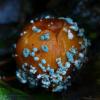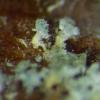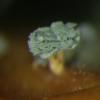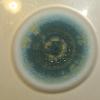
24-04-2024 21:54
Bonjour, J'ai trouvé ce Lasiobolus sur laissées

23-04-2024 15:18
 Lothar Krieglsteiner
Lothar Krieglsteiner
... but likely a basidiomycete. I hope it is o.k.

23-04-2024 13:17
 Edouard Evangelisti
Edouard Evangelisti
Bonjour à tous, Je viens de récolter ce que je

23-04-2024 21:49
Ethan CrensonHello all, A friend recently found this orange as

22-04-2024 11:52
 Zuzana Sochorová (Egertová)
Zuzana Sochorová (Egertová)
Hello,I made a loan of a collection of Microstoma

11-01-2022 16:36
Hi does anyone have a digital copy of Raitviir A (

22-04-2024 20:38
 Miguel Ángel Ribes
Miguel Ángel Ribes
Good afternoon.Does anyone know this anamorph?It g

19-04-2024 14:28
Cudoniella tenuispora: Distinctive macro and habit
Synnemata of Penicillium/Talaromyces on Hawthorn (Crataegus) fruit
Stephen Mifsud,
08-12-2022 09:10
 Is there a specific Penicllium species like this growing on the rind of decaying fruit (not advanced state of decaying yet) of Crataegus monogyna?
Is there a specific Penicllium species like this growing on the rind of decaying fruit (not advanced state of decaying yet) of Crataegus monogyna?I have not done any microscopical investigations, but perhaps some conclusion can be already drawn from the shape, feeding type and host specificity discussed here. I can do some basic microscopy later on.
I think I managed to have a pure culture (still 1cm wide after 3 days).
Stephen Mifsud,
11-12-2022 08:45

Re : Synnemata of Penicillium/Talaromyces on Hawthorn (Crataegus) fruit
Well, this should be a Talaromyces sp. - but I cant find much knowledge about synnemata species on fruit. Wondering if someone found something similar to compare.... Good Sunday!
Przemyslaw Drzewiecki,
11-12-2022 14:38
Re : Synnemata of Penicillium/Talaromyces on Hawthorn (Crataegus) fruit
Stephen Mifsud,
11-12-2022 21:53

Re : Synnemata of Penicillium/Talaromyces on Hawthorn (Crataegus) fruit
Thank you for this Przemek - seems we have same interest / 'hobby' !!
I am happy to see some of my Penicillium records and colonies match those listed in the document you kindly shared (Is that your work?).
However I think the one I found on Hawthorn is different from those in the doc because it formed distinct tufts (synnemata) while those in the document are species with simple conidiophores. Also, my colonies have yellow-ochre areas - the same colour as the base/column of the synnematous growth.
For now I am happy that I have a pure colony and I will do more research in the coming days.
I am happy to see some of my Penicillium records and colonies match those listed in the document you kindly shared (Is that your work?).
However I think the one I found on Hawthorn is different from those in the doc because it formed distinct tufts (synnemata) while those in the document are species with simple conidiophores. Also, my colonies have yellow-ochre areas - the same colour as the base/column of the synnematous growth.
For now I am happy that I have a pure colony and I will do more research in the coming days.
Przemyslaw Drzewiecki,
11-12-2022 22:31
Re : Synnemata of Penicillium/Talaromyces on Hawthorn (Crataegus) fruit
Yes, mycology is a great hobby. :-) Sorry, I didn't notice that I provided a link without authors.
Here is the public source:
https://www.natur.cuni.cz/biologie/botanika/veda-a-vyzkum/atlas-mikroskopickych-saprotrofnich-hub-ascomycota
Are you sure these fruits didn't pass through the fox's digestive system? It is somewhat similar to Penicillium vulpinum.
Regards, Przemek
Here is the public source:
https://www.natur.cuni.cz/biologie/botanika/veda-a-vyzkum/atlas-mikroskopickych-saprotrofnich-hub-ascomycota
Are you sure these fruits didn't pass through the fox's digestive system? It is somewhat similar to Penicillium vulpinum.
Regards, Przemek
Stephen Mifsud,
12-12-2022 00:57

Re : Synnemata of Penicillium/Talaromyces on Hawthorn (Crataegus) fruit
I'm impressed with that website Przemek, the amount of info is incredible a mix of educative and taxonomic. Even if written in czech, i know I am going to use it.
Your question is very easy to answer. The fungus was found on the skin (epicarp) of the fruit of Crataegus monogyna (Hawthorn) fallen from the tree and lying on moist ground in a valley, still reddish and intact. In our country (Malta) there are no foxes or other mammals that consume this fruit. There were hundreds of fruits and about 10% where infected with this Penicillium.
Your suggestion is valid, it looks likes P. vulpinum (P. claviforme) but it is not copriphilous.
Thanks for messaging!
Your question is very easy to answer. The fungus was found on the skin (epicarp) of the fruit of Crataegus monogyna (Hawthorn) fallen from the tree and lying on moist ground in a valley, still reddish and intact. In our country (Malta) there are no foxes or other mammals that consume this fruit. There were hundreds of fruits and about 10% where infected with this Penicillium.
Your suggestion is valid, it looks likes P. vulpinum (P. claviforme) but it is not copriphilous.
Thanks for messaging!





